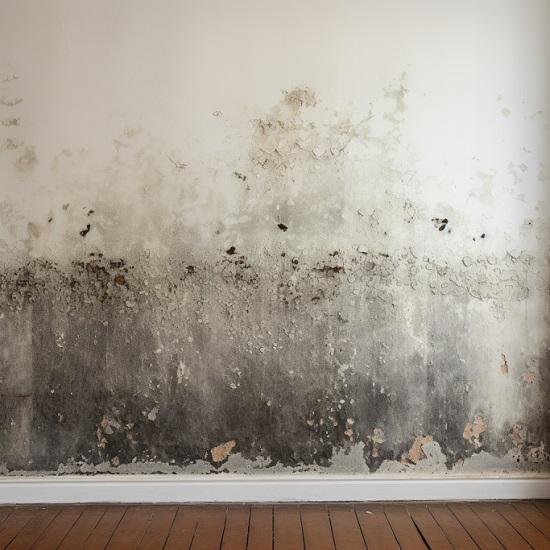After Mold Remediation Strategies for Clean Rooms
After Mold Remediation Strategies for Clean Rooms
Blog Article
Professional Tips for Post Mold Removal Success
In the world of mold remediation, efficiently getting rid of mold and mildew is only half the battle; the true obstacle lies in preventing its reappearance. By sticking to professional tips and best techniques, individuals can safeguard their spaces versus mold and mildew resurgence and preserve a healthy interior atmosphere.
Screen Humidity Degrees Regularly
After finishing mold removal procedures, maintaining ideal moisture degrees is essential to stop mold and mildew re-growth and ensure a healthy indoor atmosphere. High moisture levels over 60% create a favorable setting for mold and mildew to grow, making regular keeping an eye on an aggressive measure to avoid any kind of future mold concerns.
Using hygrometers or wetness meters can aid in accurately measuring humidity levels in different areas of the home. These tools supply real-time information that enables removal specialists to make enlightened choices regarding ventilation, dehumidification, and other necessary actions to maintain perfect humidity levels post-remediation. Additionally, establishing a routine schedule for humidity checks, particularly in high-risk locations such as kitchens, washrooms, and basements, is a proactive strategy to mold and mildew avoidance. By consistently keeping track of humidity degrees, homeowner can efficiently mitigate the threat of mold reoccurrence and keep a healthy and balanced indoor atmosphere post-remediation.
Conduct Thorough Inspections Post-Remediation
Complying with the conclusion of mold and mildew remediation procedures, it is essential to carry out thorough evaluations to confirm the performance of the removal process. These post-remediation evaluations are critical in ensuring that the mold issue has been effectively resolved which there is no recurrence or staying mold development. Examinations ought to be lugged out by certified specialists that have knowledge in determining mold and mildew and examining interior air top quality.
During these inspections, various techniques such as visual evaluations, air sampling, and surface sampling may be used to extensively review the remediated locations. Visual evaluations include a detailed assessment of the properties to look for any type of noticeable signs of mold and mildew development or water damage. Air tasting aids in identifying the air-borne mold and mildew spore degrees, while surface sampling can identify mold and mildew bits on surfaces.
Implement Proper Air Flow Methods
After guaranteeing the performance of the mold remediation process with extensive inspections, the next essential step is to focus on applying proper ventilation approaches. Adequate ventilation is vital in protecting against mold reoccurrence by controlling wetness degrees and advertising air blood circulation.
Proper ventilation not only help in stopping mold and mildew development yet additionally adds to the general wellness and convenience of occupants. By ensuring sufficient ventilation throughout the residential or commercial property, you can decrease the danger of mold and mildew regrowth and produce a much healthier living atmosphere. Normal upkeep of air flow systems, consisting of cleansing and filter substitutes, is important to maintaining efficient air flow. Consulting with HVAC experts can offer more insights right into maximizing ventilation techniques for your certain building needs.

Use Mold-Resistant Products for Repair Works
To enhance the lasting efficiency of mold and mildew removal efforts, incorporating mold-resistant products for repair work is essential in minimizing the danger of future mold development. Mold-resistant materials are created to endure moisture and hinder mold growth, making them an important choice for areas vulnerable to wetness and humidity. When fixing areas impacted by mold, utilizing materials such as mold-resistant drywall, mold-resistant paints, and mold-resistant caulking can help stop mold reappearance.
Mold-resistant drywall is an excellent option to traditional Post Remediation Inspection near me drywall in locations like restrooms and basements where wetness degrees are higher. When subjected to damp conditions, this kind of drywall has an unique layer that stands up to mold and mildew development also. In addition, making use of mold-resistant paints having antimicrobial agents can further inhibit mold and mildew growth on walls and ceilings.
In areas where dampness prevails, such as washrooms and cooking areas, utilizing mold-resistant caulking around sinks, tubs, and windows can help seal out water and avoid mold from taking hold in fractures and crevices. By purchasing these mold-resistant products throughout repair services post-remediation, you can significantly lower the chance of future mold and mildew issues and maintain a much healthier interior atmosphere.
Maintain Tidiness and Address Water Issues
After mold removal, it is crucial to preserve a tidy environment to stop the regrowth of mold. Leakages, water invasion, or high moisture degrees can create the ideal breeding ground for mold and mildew, so it is imperative to take care of any kind of water-related problems instantly.
To preserve tidiness, take into consideration using HEPA filters in vacuums and air cleansers to catch mold and mildew spores and prevent their flow airborne. Additionally, ensuring appropriate ventilation in locations vulnerable to moisture accumulation, such as shower rooms and cooking areas, can assist keep moisture levels in check. By remaining attentive concerning sanitation and attending to water issues quickly, you can efficiently stop mold reinfestation and maintain a healthy and balanced indoor atmosphere.
Conclusion

In the realm of mold removal, efficiently removing mold and mildew is just half the fight; the true obstacle exists in preventing its reappearance. After completing mold remediation procedures, maintaining optimal moisture levels is important to prevent mold re-growth and ensure a healthy and balanced indoor atmosphere. High humidity levels over 60% produce a helpful atmosphere for mold to flourish, making regular keeping an eye on an aggressive measure to prevent any kind of future mold and mildew issues.
To improve the lasting performance of mold and mildew removal initiatives, including mold-resistant products for fixings is vital in mitigating the risk of future mold growth. After mold remediation, it is crucial to maintain a clean environment to protect against the regrowth of mold.
Report this page